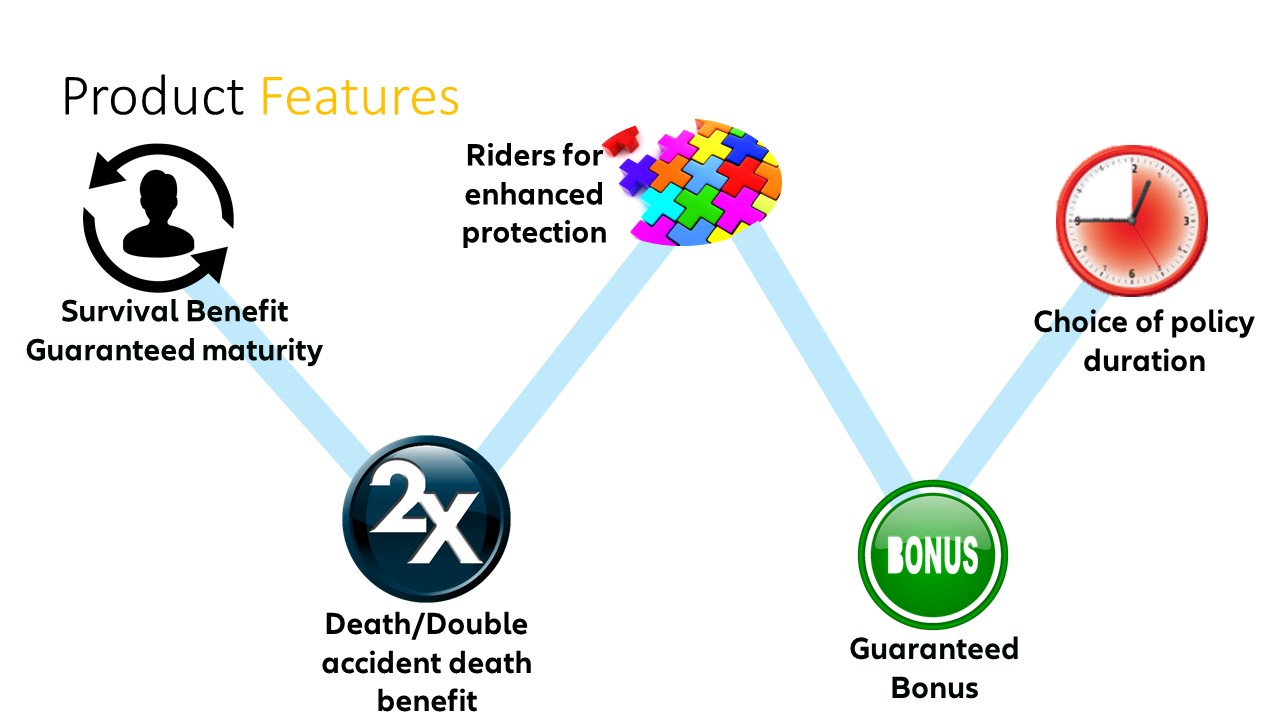Home>Finance>For What Reason May A Life Insurance Producer Backdate A Life Insurance Policy?


Finance
For What Reason May A Life Insurance Producer Backdate A Life Insurance Policy?
Modified: February 21, 2024
Learn why a life insurance producer may backdate a policy and the reasons behind it. Understand the financial implications and considerations involved.
(Many of the links in this article redirect to a specific reviewed product. Your purchase of these products through affiliate links helps to generate commission for LiveWell, at no extra cost. Learn more)
Table of Contents
Introduction
Life insurance is a crucial financial tool that provides valuable protection to individuals and their loved ones. When obtaining a life insurance policy, it is important to adhere to a variety of legal and regulatory guidelines. However, under certain circumstances, a life insurance producer may need to backdate a policy. Backdating refers to the practice of assigning an earlier effective date to the policy than the actual date it was issued.
In this article, we will explore the reasons why a life insurance producer may choose to backdate a life insurance policy. We will also examine the legal and regulatory considerations, tax implications, and the underwriting process involved in backdating a policy. Additionally, we will discuss situations where a backdated policy may be requested by the client or warranted due to special circumstances. Finally, we will address the importance of preventing misuse and fraudulent activities surrounding backdated policies.
It is important to note that backdating a life insurance policy should only occur within the bounds of legality and in adherence to industry standards. This article aims to provide insight into this practice and shed light on the various reasons why backdating may be necessary in certain situations.
Definition of Backdating in Life Insurance
Backdating in the context of life insurance refers to the act of assigning an earlier effective date to a life insurance policy than the actual date it was issued. Essentially, it involves making the policy retroactively effective. This practice can be done legally and ethically under certain circumstances, but it is important to understand the implications and considerations involved.
When a life insurance policy is backdated, it means that the coverage and benefits provided by the policy will be deemed to have started at the earlier effective date. This can have significant implications for both the insured individual and the insurance company. It allows the insured to potentially access better rates, conditions, or coverage options that were available at the earlier date, even though they applied for the policy at a later time.
Backdating is typically done at the request of the insured or for specific reasons related to the underwriting process. It can help align the policy’s effective date with a significant life event, such as a birth, marriage, or qualification for a particular rate class. In some cases, backdating may also be used to correct errors or omissions made during the application process.
It is important to note that backdating a policy should not be confused with misrepresenting any information or committing fraud. The purpose of backdating is to accurately reflect the intentions of the insured and to ensure that the policy is aligned with their specific circumstances at the time of application. This practice should always be done in accordance with the law and within the guidelines established by insurance regulatory bodies.
Insurance companies have their own rules and policies regarding the backdating of policies, which may vary depending on the specific circumstances and the type of policy being backdated. It is essential to consult with the insurance provider and understand the implications and potential limitations associated with backdating a life insurance policy.
Now that we have defined backdating in the context of life insurance, let’s explore the legal and regulatory considerations involved in this practice.
Legal and Regulatory Considerations
When it comes to backdating a life insurance policy, there are legal and regulatory considerations that must be taken into account. Insurance regulations vary by jurisdiction, and insurance companies must ensure compliance with these regulations to maintain the ethical and legal standards of the industry.
In general, insurance laws require policies to be issued based on accurate and truthful information provided by the insured. Backdating a policy must not be used to misrepresent or conceal any material facts or to manipulate insurance rates or coverage. Engaging in fraudulent activities can lead to severe legal consequences for both the insured and the insurance producer.
Insurance regulatory bodies set guidelines for the backdating of policies to ensure fair and transparent practices. These guidelines may include specific time frames within which policies can be backdated, limitations on the reasons and circumstances for backdating, and the documentation required to support the backdating request.
In some jurisdictions, insurance companies may be required to disclose the practice of backdating to the insured, or it may even be explicitly prohibited. It is important to familiarize oneself with the specific regulations in the jurisdiction where the policy is being issued and to consult with legal counsel or insurance professionals to ensure compliance.
Insurance producers also have a responsibility to be knowledgeable about the laws and regulations governing backdating. They must act in the best interest of their clients and provide accurate information regarding the implications of backdating a policy.
Furthermore, insurance companies must have clear policies and procedures in place regarding the backdating of policies. These policies should outline the circumstances in which backdating is permitted, the documentation required, and the steps involved in the approval process. Adherence to these policies helps ensure consistency, fairness, and compliance with regulatory requirements.
By complying with legal and regulatory considerations, insurance companies and producers can maintain the integrity of the insurance industry and foster trust with their clients. It is crucial to remain transparent, honest, and diligent in the handling of backdating requests to protect the interests of all parties involved.
Next, let’s explore the potential tax implications of backdating a life insurance policy.
Tax Implications
Backdating a life insurance policy can have tax implications for both the insured individual and the insurance company. It is essential to understand these implications before deciding to backdate a policy.
For the insured individual, the tax consequences of backdating a life insurance policy depend on the specific tax laws in their jurisdiction. In some cases, backdating may result in potential tax advantages. For example, if the backdated policy is eligible for more favorable tax treatment, the insured may be able to claim certain deductions or tax benefits based on the earlier effective date.
On the other hand, there can also be potential tax disadvantages. Backdating a policy may trigger a change in the policy’s classification for tax purposes, which could impact how premiums and death benefits are taxed. It is important to consult with a tax professional or financial advisor to fully understand the tax implications of backdating a life insurance policy in your specific circumstances.
For insurance companies, tax implications may arise when backdating affects the timing and recognition of premium income. Insurance companies must comply with accounting standards and tax regulations in reporting their financial statements and taxable income. Backdating a policy may impact the revenue recognition and tax liability of the insurance company, requiring them to properly account for the income from the backdated policy in the appropriate tax year.
Insurance companies should consult with their tax advisors and follow the accounting and tax guidelines in their jurisdiction to ensure compliance with tax laws and accurate reporting of income related to backdated policies.
It is important to note that tax laws and regulations are complex and subject to change. Therefore, it is crucial to seek professional advice from tax experts who can provide guidance specific to your situation and jurisdiction.
Now that we have discussed the tax implications, let’s move on to the underwriting process and policy approval considerations when backdating a life insurance policy.
Underwriting and Policy Approval
When backdating a life insurance policy, it is important to understand the impact on the underwriting process and policy approval. Underwriting is the process by which the insurance company evaluates the risk associated with insuring an individual and determines the terms and conditions of the policy.
When a policy is backdated, it means that the effective date of the policy is earlier than the date of application. This can have implications for the underwriting process as the policy will be evaluated based on the circumstances and information available at the backdated effective date.
The underwriting process typically involves assessing the applicant’s age, health, lifestyle, and other risk factors. If a policy is backdated, the underwriter will consider these factors as they existed at the backdated effective date, not the date of application. This can potentially impact the insurer’s risk assessment and the premium charged for the policy.
The insurance company will require the applicant to provide documentation or evidence to support the backdating request. This documentation may include medical records, employment records, or other relevant information that demonstrates the applicant’s circumstances and eligibility for the backdated effective date.
The underwriting process for backdated policies should follow the same standards and guidelines as any other policy. The insurance company will assess the risk based on the available information and make a decision regarding policy approval, premium rates, and coverage options.
It is important to note that backdating a policy does not guarantee approval, and the underwriter still assesses the risk based on the information available. The backdated effective date should align with a significant event or provide a valid reason for the backdating request. The insurance company retains the right to approve or deny the policy based on their underwriting criteria.
Insurance producers and applicants should work closely with the insurance company and provide accurate and complete information during the underwriting process. Proper documentation and transparency will help facilitate the backdating request and ensure a smooth approval process.
Now that we have covered the underwriting and policy approval considerations, let’s explore the reasons why a client may request a backdated policy or the special circumstances that warrant backdating.
Client’s Request and Special Circumstances
There are various reasons why a client may request a backdated life insurance policy or when special circumstances warrant backdating. These situations may arise due to certain events or changes that occurred before the policy application date but are relevant to the coverage.
One common reason for a client’s request to backdate a policy is the occurrence of a significant life event. For example, if a client recently got married or had a child, they may want the policy to have an earlier effective date that aligns with these events. Backdating the policy can help ensure that the coverage includes the new spouse or child.
Another scenario where backdating may be requested is if the client had a health change or underwent a medical procedure before applying for the policy. By having the policy backdated to the date of the event or procedure, they may be able to secure better rates or eligibility for certain coverage options.
Additionally, there may be cases where the client had coverage under a different insurance policy that lapsed or terminated before applying for a new one. Backdating the new policy to the expiration date of the previous coverage can help bridge any gaps in insurance protection.
Special circumstances may also warrant backdating a policy. For example, if there was an administrative error during the application process that resulted in a delay in issuing the policy, backdating can ensure that the coverage still starts at the intended date.
Furthermore, it is important to consider cultural or religious customs that may require a policy to be backdated. For instance, in some cultures, it is customary to provide financial protection for a newborn from the date of birth, regardless of the policy application date.
In all cases, it is crucial to communicate openly with the insurance company and provide the necessary documentation to support the backdating request. This will help ensure that the request meets the criteria for a legitimate backdating scenario and increase the chances of approval.
However, it is important to note that the insurance company reserves the right to evaluate each request based on their policies and guidelines. Clients should be prepared for the possibility that their backdating request may be denied if it does not meet the necessary criteria.
Next, let’s explore the importance of preventing misuse and fraudulent activities related to backdated policies.
Preventing Misuse and Fraud
While backdating a life insurance policy can be done for valid reasons and under specific circumstances, it is crucial to prevent misuse and fraudulent activities surrounding this practice. Insurance companies, insurance producers, and individuals seeking backdated policies must remain vigilant to ensure the integrity of the insurance industry.
Insurance companies play a crucial role in preventing misuse and fraud. They must establish robust policies and procedures regarding the backdating of policies. These policies should outline the circumstances in which backdating is allowed, the documentation required, and the evaluation criteria for approving backdated policies. Insurance companies should perform thorough reviews and due diligence to verify the accuracy and legitimacy of the backdating requests.
Insurance producers, as representatives of the company, have a responsibility to act ethically and professionally. They should provide accurate information and guidance to clients, ensuring that they understand the implications and requirements of backdating a policy. Producers should also be trained to identify any red flags or potential indicators of fraudulent activities and report them to the appropriate authorities.
Individuals seeking backdated policies should be transparent and truthful in their applications. They should provide all necessary documentation and evidence to support their backdating request. Misrepresenting information or engaging in fraudulent activities can have severe legal consequences for the individual and damage the reputation of the insurance industry at large.
To further prevent misuse and fraud, insurance regulatory bodies play a crucial role in setting and enforcing guidelines and regulations. They should continuously review and update these guidelines to address emerging risks and challenges related to backdated policies. Regulatory bodies also conduct audits and investigations to ensure compliance and take appropriate action against those who engage in fraudulent activities.
It is essential for consumers to be aware of the risks and consequences of fraudulent activities related to backdated policies. They should thoroughly research insurance companies and producers, check for licensing and credibility, and report any suspicious activities to the relevant authorities.
By maintaining a proactive approach, insurance companies, producers, regulatory bodies, and consumers can work together to prevent misuse and fraud associated with backdated policies. This helps uphold the integrity of the insurance industry and ensures that policyholders receive the coverage they deserve.
Now, let’s conclude our discussion on backdating life insurance policies.
Conclusion
Backdating a life insurance policy can be a complex and sensitive practice that involves legal, regulatory, and ethical considerations. It is important to understand the reasons why a life insurance producer may choose to backdate a policy, as well as the implications and potential risks involved.
Backdating can be done to align the policy’s effective date with significant life events or to correct errors made during the application process. It can also be requested by the client due to special circumstances that warrant a backdated policy. However, it is crucial to ensure that backdating is done within the bounds of legality, in adherence to industry regulations, and to prevent misuse or fraudulent activities.
Legal and regulatory considerations play a crucial role in guiding the backdating process and ensuring compliance with the law. It is essential for insurance companies to establish clear policies and procedures regarding backdating and for insurance producers to act ethically and professionally when handling backdating requests.
Tax implications must also be taken into account, as backdating can have both advantages and disadvantages for the insured individual and the insurance company. Consulting with tax professionals is necessary to fully understand the tax consequences of backdating a policy.
The underwriting process and policy approval are also affected by backdating, as the effective date of the policy is retroactively adjusted. The insurance company will evaluate the risk and eligibility based on the circumstances and information available at the backdated effective date.
To prevent misuse and fraud, it is crucial for all parties involved to exercise transparency, honesty, and diligence. Insurance companies must have stringent policies in place, producers should be trained to identify potential fraudulent activities, and individuals seeking backdated policies must provide accurate information and comply with the requirements.
In conclusion, backdating a life insurance policy should be approached with caution and a thorough understanding of the legal, regulatory, and ethical considerations involved. It is a practice that should only be used for legitimate purposes and within the boundaries of the law. By ensuring compliance and preventing misuse and fraud, the insurance industry can maintain its integrity and protect the interests of policyholders.














